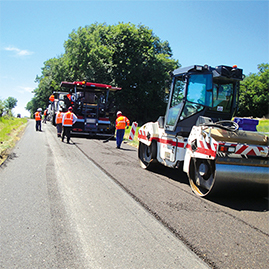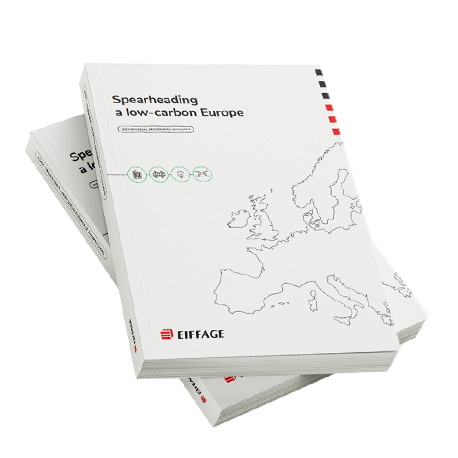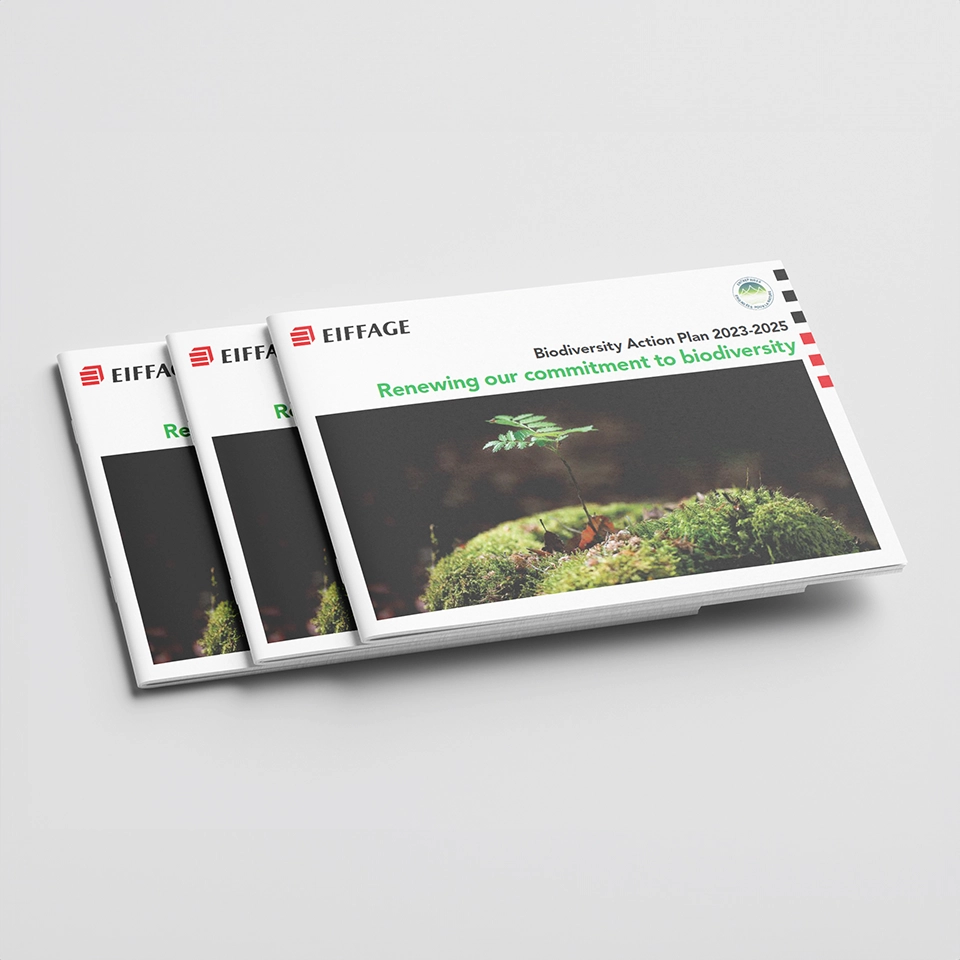Eiffage's commitment to circular economy
The circular economy is a much-needed model that is forcing us to rethink how we design, manufacture and build. With initiatives ranging from the reuse and recovery of materials to the recarbonisation of concrete, the development of circular economy solutions and their incorporation into Eiffage activities enable us to help relieve the pressure on natural resources.
Circular economy: what are the challenges?
We are conscious of the need to combat resource depletion and are always seeking to optimise and reduce our reliance on virgin raw materials (aggregates, oil, metals, etc.) from the project design phase onward. Ecodesign and material reclamation are two priority areas in the Group’s circular economy policy.
We are therefore evolving our working methods, business models, and services in line with circular economy principles, in order to meet the following challenges:
Upstream of production
- Reduce consumption of extracted materials: sand, minerals, gypsum, phosphorus, water, etc. Worldwide, constantly growing demand is leading to overexploitation and damaging the planet’s capacity to replenish resources naturally, which further reduces the quantities available.
- Combat the fragmentation and depletion of natural environments, including the disconnection of spaces and ecological corridors. Pressure on resources reduces resilience in the ecosystems that provided the materials. Excessive numbers of extraction and transformation sites, transport links and waste treatment sites are contributing to the fragmentation of natural habitats for both fauna and flora. Resource management methods (e.g. water management and pollution treatment) can also weaken ecosystems. More details can be found in our Biodiversity Action Plan.
Downstream of production
- Reduce soil, water and air pollution.
- Reduce land pressure to combat artificialisation and achieve “zero net land cover change”.
- Prioritise material reclamation cycles and recyclability: avoid the extraction of virgin raw materials by reusing existing materials or creating raw materials through recycling.
Because they help reduce greenhouse gas emissions, all these circular economy approaches feature prominently in our low-carbon strategy.
The circular economy charter
A charter outlining Eiffage’s commitments to the circular economy was shared to inform our teams and share best practices within the Group’s various business lines.
The circular economy applied to Eiffage business lines

To limit the use of raw materials, our teams strive to prioritise the reuse and reclamation of materials. From grinding up demolition waste for use as graded recycled gravel in the construction of roads and buildings or major urban redevelopment projects to the reclamation of materials from building sites, trading in recovered equipment and tools, selective deconstruction, and shared heat networks – numerous virtuous business practices have been implemented at all levels within the Group, and there is still considerable potential for development:
- Incorporation of recycled materials into our materials (concrete, plastics, metals, etc.).
- Reclamation of materials sourced from deconstruction.
- Prolonging the useful life of our products and structures.
- Encouraging reuse and exchange between projects and divisions.
- Innovation in our design methods (scalability, ease of disassembly, etc.).
- Optimised logistics in a context of pressure on supply and availability.
- Development of new business models or major overhauls of existing models.
- And plenty more to come...
Our principles
- Developing the incorporation of recycled or renewable materials into our business activities.
- Prolonging the useful life of structures and materials by making them reusable and recyclable.
- Prioritising transition in our manufacturing processes and reducing non-recovered waste as far as possible.
- Working with professional, scientific and community stakeholders through joint progress initiatives.
Conditions for success
- Implement a sustainable resource management policy.
- Expand and accelerate our eco-innovation approach.
- Evaluate, manage and monitor the performance of our solutions.

